Fishes
Media
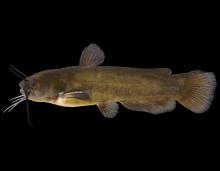
Species Types
Scientific Name
Ameiurus natalis
Description
The yellow bullhead is widespread in Missouri. It is the most common bullhead catfish in the Ozarks and Bootheel lowlands. It has white chin barbels, and the edge of its tail fin is straight, not notched.
Media
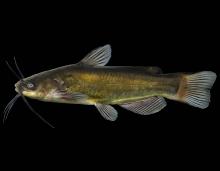
Species Types
Scientific Name
Ameiurus melas
Description
The black bullhead is widespread in Missouri. It is the most common bullhead catfish in north and west portions of the state. It has dusky or black chin barbels, and the edge of its tail fin is notched, not straight.
Media
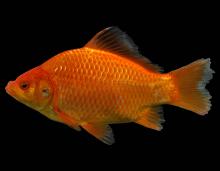
Species Types
Scientific Name
Carassius auratus
Description
Goldfish are not native to North America. They often escape into the wild from bait buckets and other causes, but there are few self-sustaining populations in Missouri.
Media
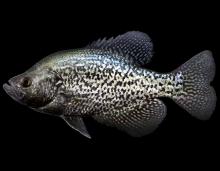
Species Types
Scientific Name
Pomoxis nigromaculatus
Description
The black crappie is a popular panfish. It is deep bodied and slab sided. The sides are silver with an irregular pattern of dark speckles. The upper jaw is long, reaching past the middle of the eye.
Media
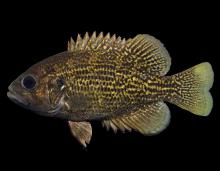
Species Types
Scientific Name
Ambloplites rupestris
Description
The northern rock bass, or goggle-eye, is thicker than most other sunfish, with a large mouth and very large eyes. It occurs in northern Ozark streams, tributaries of the middle Mississippi, and a portion of the southwestern Ozarks; sometimes in Ozark reservoirs.
Media

Species Types
Scientific Name
Micropterus dolomieu
Description
The smallmouth bass is a popular gamefish mostly found in cool, clear Ozark streams and large reservoirs in the Ozarks. It's less common in the upper Mississippi River and its principal prairie tributaries that have clear water and permanent flow.
Media
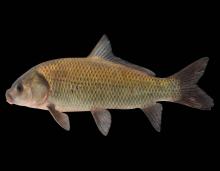
Species Types
Scientific Name
Ictiobus niger
Description
Compared to Missouri’s other buffalofishes, the black buffalo is less abundant and widespread, and of the three, it occurs most often in places with strong currents.
Media
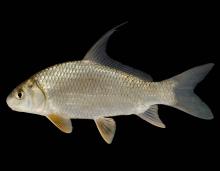
Species Types
Scientific Name
Carpiodes cyprinus
Description
Like our other carpsuckers, the quillback has a deep, rather thick body and a long, sickle-shaped dorsal fin. This silvery, hump-backed fish is widely distributed in Missouri.
Media
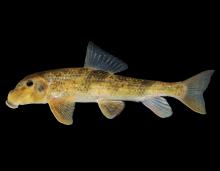
Species Types
Scientific Name
Hypentelium nigricans
Description
The northern hog sucker is one of the most abundant and widely distributed stream fishes in the Ozarks. It has a large, bony, square head. The mouth is at the tip of snout on the bottom. There are usually four dark crossbars.
Media

Species Types
Scientific Name
Moxostoma erythrurum
Description
The golden redhorse is a smaller-bodied sucker with large scales and a short dorsal fin. It occurs in Ozark and northeast Missouri streams.
See Also


Media

Species Types
Scientific Name
Amphiuma tridactylum
Description
The three-toed amphiuma is an eel-like, completely aquatic salamander. It has very small forelimbs and hind limbs, each with three tiny toes. In Missouri it’s found only in the Bootheel region.
Media

Species Types
Scientific Name
Siren intermedia nettingi
Description
The western lesser siren is an eel-like, aquatic salamander with external gills, small eyes, small forelimbs with four toes, and no hind limbs. In Missouri, it’s found mostly in the Bootheel and northward in counties near the Mississippi River.
About Fishes in Missouri
Missouri has more than 200 kinds of fish, more than are found in most neighboring states. Fishes live in water, breathe with gills, and have fins instead of legs. Most are covered with scales. Most fish in Missouri “look” like fish and could never be confused with anything else. True, lampreys and eels have snakelike bodies — but they also have fins and smooth, slimy skin, which snakes do not.





















